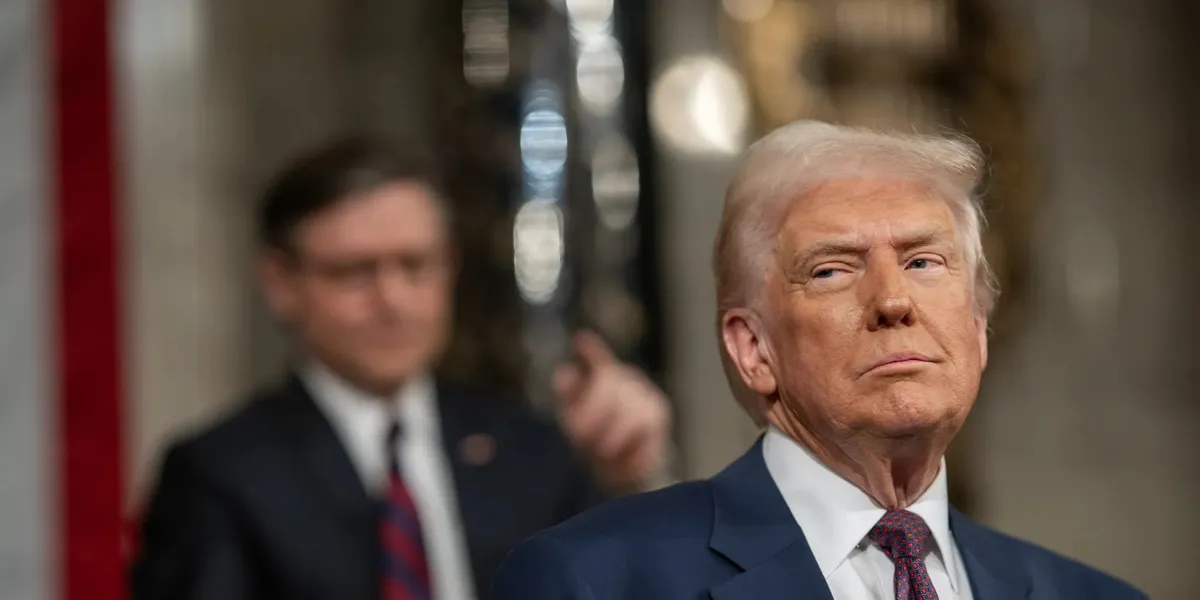President Donald Trump’s assault on US wind could soon take another unpleasant turn as his administration readies new rules that would further limit access to federal tax credits that have driven industry growth for decades.
How restrictive impending Department of Treasury tax guidance would be is unclear. This has left anxious developers leaning heavily on their legal teams to prepare them for a range of difficult scenarios that could cripple project eligibility for the clean electricity production tax credit (PTC).
Potentially at risk are dozens of onshore wind projects. Congress in the ‘Big Beautiful Bill’ (BBB) signed into law by Trump on 4 July moved phase out of the PTC ahead by five years.
“We’re in a guessing game right now in terms of what it is going to look like. It could be business as usual or a complete upheaval of what we got,” said Lauren Collins, a partner at Vinson & Elkins, whose practice focuses on clean energy project finance tax matters.
“We certainly expect that whatever guidance comes out will at least be somewhat more restrictive than current guidance,” she said, noting that Treasury is motivated to get the rules done within the original 45-day window set in Trump’s 7 July executive order. Thirty days remain. “We’re going to know pretty quickly.”
Collins added she doesn’t believe Treasury is looking for input from developers as they write these rules, generally common practice for proposed changes that could significantly affect investment. “Seems like it is going to be a little bit of a black box,” she said.
Enacted in 1992 under Republican president George HW Bush, the PTC is the main subsidy for onshore wind. It pays a per-kilowatt-hour tax credit for electricity generated from a qualified facility over 10 years, reducing the owner’s tax liability and improving its financial returns.
A prime target for Trump since he took office in January, the PTC lowers the cost of generating wind, making it more cost competitive versus fossil fuels, the lynchpin of his so-called energy dominance agenda.
Under the new law, onshore wind (and solar) projects that start construction by 4 July 2026 will have until June 2030 – four years – to enter service. Otherwise, if work begins between 5 July and 31 December, they must come online by the end of 2027 to qualify for tax credits.
Treasury guidance in place since 2013 sets two main “safe harbour” ways to start construction for tax purposes. Incur 5% of total project cost, usually as the developer takes delivery of equipment or services or begin “physical work of a significant nature” at the project site.
Trump’s executive order directed Treasury to issue “new and revised guidance” to ensure that policies concerning the ‘beginning of construction’ are not circumvented, including by preventing the artificial acceleration or manipulation of eligibility.
Also, “by restricting the use of broad safe harbors unless a substantial portion of a subject facility has been built.”
What could happen next
Industry officials believe the administration could hurt wind development in several ways with tax credit rule changes.
First, raise the 5% capex requirement to 10% or more. This would present compliance difficulties for some developers amid an industry-wide rush to procure equipment.
Second, Treasury could impose tougher requirements for developers to demonstrate actual construction. Third, potentially compress the four-year timeline for a project to enter operation. A two-or three-year window would be difficult and probably impossible to meet for some projects given supply chain bottlenecks and interconnection delays.
Fourth, make retroactive changes to rules by which developers qualified projects for tax credits. Such a move would seriously disrupt an industry with already low installation levels in recent years, undermining legal security for US investments, and likely prompting capital flight.
“Our hope and expectation is that it would only apply on a go-forward basis,” said Collins, who cautioned that given Trump’s very clear directive and goal of trying to undermine green energy development, “It is fully within the realm of possibility that it is retroactive.”
Fifth, slow project compliance reviews related to complicated new foreign entity of concern (FEOC) restrictions which take effect next year, or change guidance, which Trump ordered Treasury to review.
Can courts, Congress rescue wind?
Some industry officials are hopeful the courts will stay implementation of at least some potential rule changes, arguing that an executive order cannot supersede statute – BBB – even if it results in some kind of guidance. It must be consistent with language and intent of the law.
They suggest the administration will need to calculate that if the result of seeking injunctive relief is some kind of indefinite stay, this would effectively mean it will have failed to achieve any of its goals as laid out in Trump’s executive order.
As FEOC and construction start also apply for other energy technologies to access tax credits, upcoming Treasury rules will test how far the administration can go in taking a harsher bifurcated approach with regulatory guidance for wind and solar.
Making it difficult or impossible for wind to qualify for tax credits under FEOC restrictions, for example, while taking a benign approach for other technologies could create friction with some majority Republicans in the Senate.
Six senators recently made the point publicly that Trump’s executive order introduces ambiguity for tax credit construction start criteria, which runs counter to the intent of Republicans in Congress with BBB that the administration be consistent and respect precedent with guidance in effect for 12 years.
The officials noted that with a slim 53-47 majority, these senators would have leverage to potentially constrain executive overreach given the administration needs other parts of its domestic agenda to pass Congress.
For now, it’s anybody’s guess what rule changes will look like – and the clock is ticking on issuance. For developers, starting project work is paramount.
“In these 30 days, if you can do any construction, if it makes sense, absolutely do it,” said Collins.
(Copyright)


